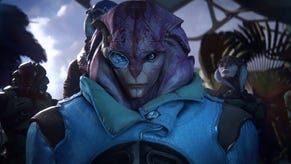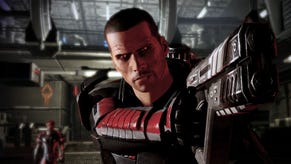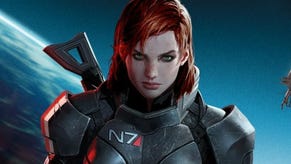BioWare: "Not one word was written lightly" of Mass Effect 3 Bromance
The writers behind Mass Effect 3's gay and lesbian romances tried to approach their subject matter with an eye for respect and authenticity, not titillation.
In a post on the BioWare Blog, Dusty Everman, the main writer for Mass Effect 3's Steve Cortez, said writing a gay male romance wasn't a project free he took on without trepidation.
"Though I was a bit out of my element here, I’m very happy with how Cortez turned out," Everman said.
"Given the nature of the relationship, I expected that my work here would be scrutinized more than anything I’ve ever done, so not one word was written lightly. The early feedback I’ve seen has been encouraging, and I’m eager to hear everything players have to say about him, both positive and negative."
The writer said he had some concerns that he wouldn't be able to write a relationship which felt real, and to ensure players didn't feel surprised by Cortez's sexual orientation.
Meanwhile, Patrick Weekes, who penned Samatha Traynor, said his first draft was far too focussed on Traynor's orientation, rather than on her as a person.
"My friends and managers called me on it. I’d been so focused on writing something positive that I hadn’t made a real-enough character," he said.
"So in the next draft (closer to how she shipped), the focus was on her as a mostly lighthearted fish out of water, a very smart lab tech trying to adjust to life on the front lines, with her identity as a lesbian present but not shouted from the rooftops."
A literally steamy scene between Shepard and Traynor was a point of controversy, but Weekes argued that Traynor deserved as much of the limelight as other romanceable characters.
"For a while we were on the fence about whether to have that scene or just do a fade to black as Shepard stood up. We put it in because this scene was Traynor’s biggest romance moment from a cinematic perspective and I didn’t want to say, 'Romancing Ash? You get a big cutscene. Romancing Traynor? Fade to black,'” he explained.
The full post is well worth a read if you're interested in inclusive writing for games.










